A New Kind Of Amazon Store
All your favorite, top-rated Amazon products in one store?? Yes, it’s now a thing in Amazon’s latest brick-and-mortar concept store. This week, FRCH NELSON’s Barb Beeghly explored the brand’s newest venture into physical retail, Amazon 4-Star and gave us the scoop!
Located at located at 72 Spring Street in the SoHo neighborhood of Manhattan, Amazon 4-Star lives and thrives in the heart of the NYC’s top retail neighborhood. Upon entering the store through two oversized doors, shoppers immediately feel like they just landed on the Amazon homepage. A variety of products such as phone chargers, quirky kitchen gifts, laptops, and Alexa integrated products are displayed on tables and shelves within the 4,000 square-foot space.
Staying true to its digital roots, casual signage throughout Amazon 4-star emphasizes the familiar feeling of its website. Items are grouped by “Most-Wished-For,” “Highly Rated,” “Frequently Bought Together,” or “Amazon Exclusives”. The most promising aspect of the store is all merchandise has been awarded AT LEAST four stars on the five-star scale by Amazon customers (hence the store’s name). In total, Amazon 4-star stocks around 2,000 items that have to been curated by Amazon to avoid the website’s sellers that falsely trick the review system. At the store, you can trust that you are getting the best products directly from top retailers.
Prices at Amazon 4-star match those on the Amazon commerce website. Digital price tags resembling miniature Kindles with e-ink display are connected to the internet and stay in sync with prices listed on the website. Just like online you can only get the discounted prices if you’re a Prime Member. If you are not already a Prime member, store employees are happy to sign you up for a 30-day free trial.
The idea of Amazon has always been centered around the idea that shoppers can trust they are getting the lowest prices while engaging in a painless decision-making process in the comfort of their home. By selling just one blender, one shower curtain, and one pizza cutter backed by the 4-Star guaranteed review, Amazon 4-Star has made decision making easier than ever while also giving customers the satisfaction of carrying their purchases out the door. Further into the painless process, after seeing, touching, and interacting with top products, Prime Members pay at kiosks by entering their Amazon login information. You will rarely see credit card, and definitely no cash in this store.
While the space is busy and the merchandising a little messy, it’s just another way Amazon is testing the physical retail space. We wouldn’t be surprised if this is a temporary concept that continues evolve and refine – as Amazon is no stranger to testing the waters and making a splash.
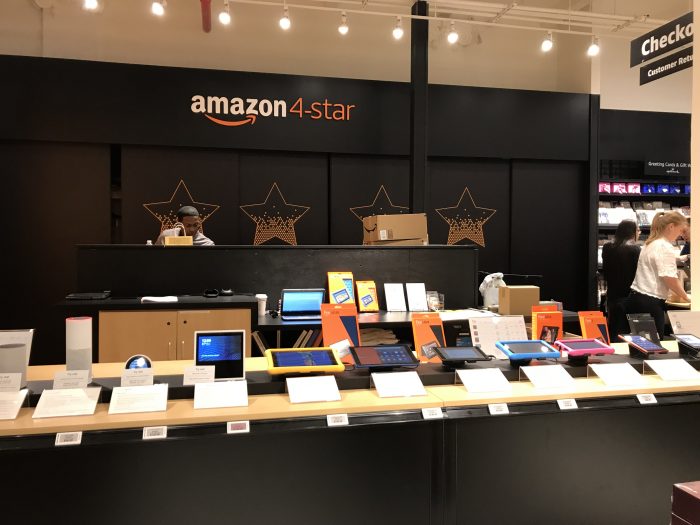
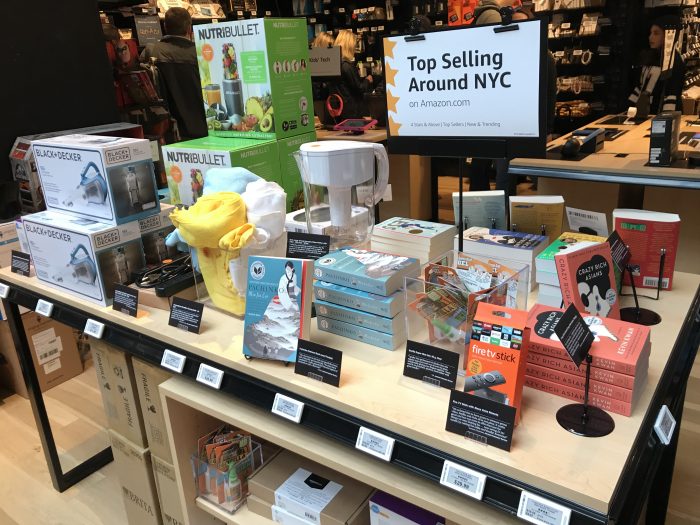
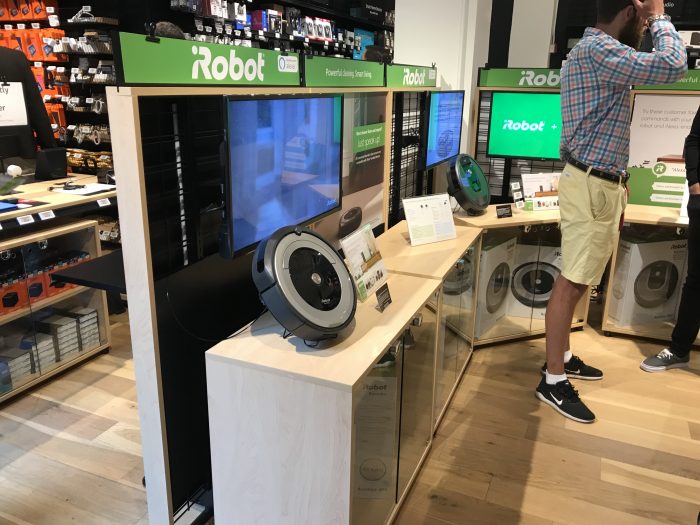
5 Key Takeaways from ShopTalk 2019
The fourth year of Shoptalk in Las Vegas has come and gone. Running from March 3rd-6th, this year’s event sold out at 8,400 attendees. Similar to many retail conferences today, Shoptalk is heavily rooted in e-commerce and customer experience and if you’re interested in direct-to-consumer startups as week as big-name retailers, this is the conference for you.
So, if you’re wondering if you should attend next year’s event or just want to know more, we’ve got you covered. Here are 5 key takeaways from Shoptalk 2019:
1. Stores Must Become the Playgrounds of Retail
Something that has become obvious in recent years is that physical retail is not dead. Now, more than ever “people are striving for human connection,” explained Jocelyn Wong, CMO of Lowe’s Home Improvement, during the “New Brand-Retailer Relationship” session. To create these connections, retailers, both traditional and digitally native, must consider developing store environments that are more immersive, appealing and engaging. It’s has been proven that more revenue is generated through in-store purchases than any other selling channel, so why not elevate the physical space to increase these sales even further? People want unique experiences and a place to play, engage and trial – so give them what they want.
2. Partner Up to Expand Your Reach
Retail partnerships and brand collaborations are on the rise and the more they occur, the more benefits they prove to hold for brands – both new and old. Many retailers are starting to realize they can learn from one another and can gain both value and consumer reach. In a session entitled “New Retail Experiences,” Neela Montgomery, CEO of Crate & Barrel explained how the beloved lifestyle brand, recently collaborated with the digitally native furniture subscription start-up, Fernish. “The Rent-the-Runway of Sofas” was able to showcase their innovative, new platform to a potentially new audience of furniture-lovers, while Crate & Barrel added a new selling (or in this case, renting) channel, adding a layer of flexibility to the brand and expanding its product reach even further by offering up their products at a lower point of entry.
3. Become More Authentic by Marrying Data and People
Consumer data was a hot topic at this year’s event and in today’s market it’s crucial for companies to utilize data in order to gain customer insight. As data continues to play a large role for most brands, it’s imperative that retailers understand how to use it to the full potential. In the session “Delighting Customers through Personal Interactions,” President and COO of Stitch Fix, Mike Smith explained the importance of using data while staying authentic with consumers. He shared how the brand employs hundreds of data scientists, but that the data they pull would ultimately have no true influence without the input of the thousands of stylists they also employ. Data may reveal some powerful things, but it’s important to remember that behind that data are real people with thoughts and feelings looking for authentic and engaging experiences.
4. Try Something New or Get Left Behind
This year’s conference was a good reminder of why it’s important for legacy retailers not to get content with the status quo. Today consumers are more comfortable with the idea of brands trying something new – a fail-fast mentality that keeps brands motivated to experiment and innovate to keep both their environments and experiences fresh. From AI to social media, its now easier than ever to try something new. In the session “Facebook, Building Shopping Experiences for the Changing Consumer,” Mark Rabkin, VP, Ads & Business Platform Facebook explained how Dick’s Sporting Goods recently began using digital ads over the 2018 holiday season. As a result, the company reached record metrics for itself – and within Facebook advertising. This is just one example of how traditional retailers can still make their mark and get ahead in the game by adjusting and updating their digital strategies.
5. Empower and Leverage Your Retail Associates
Full swing into the digital age it may seem hard to believe that people are craving human connection, but as already mentioned, this is very true. To provide this specific human connection retailers need to shift the role of store associates into brand ambassadors, empowering their feet on the ground to share and embrace the brand’s values, mission and story. Don’t make key decisions without gaining associate insight and buy-in. There is no greater brand advertisement than your people – provide opportunities for them to start a dialogue and engage with shoppers on a personal level. Your environment can be memorable for shoppers, but your associates are the ones that will make the experience meaningful.
Overall, I left Shoptalk 2019 with some great insight and inspiration. While over the years, the brand names have gotten bigger and the audience has grown, I challenge ShopTalk to focus more on disruption in the coming years and less on simply checking off the ‘big brand names’. I think retail could learn more from out-of-industry insights and learnings from disruptive start-ups to keep the thinking fresh and the approach innovative.
**Click here to view and download some of this year’s ShopTalk presentations.
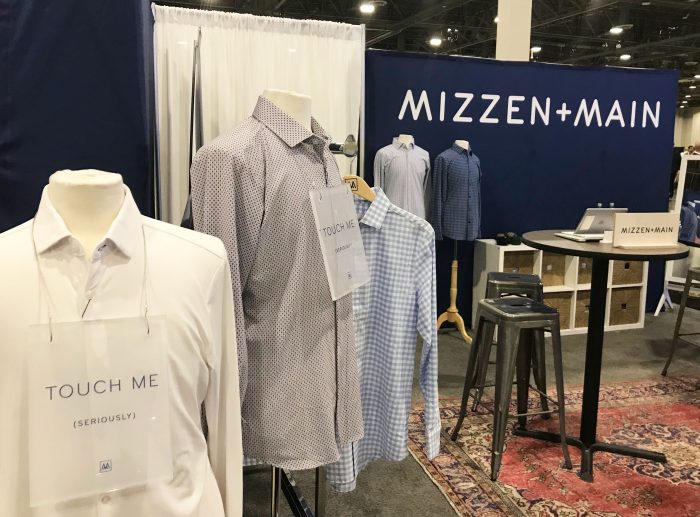
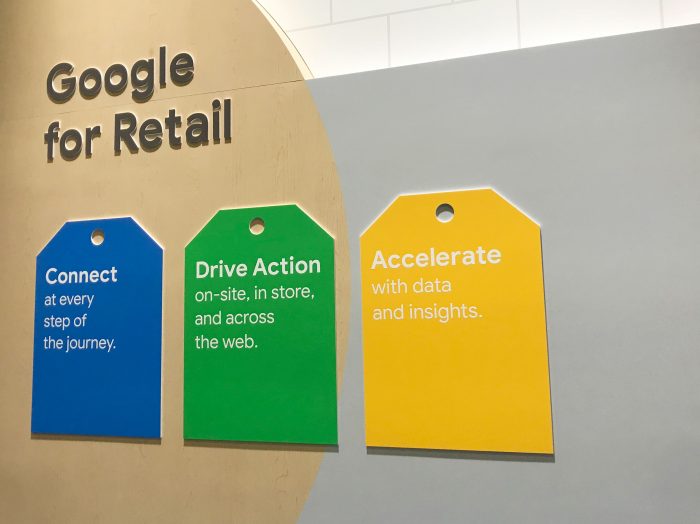
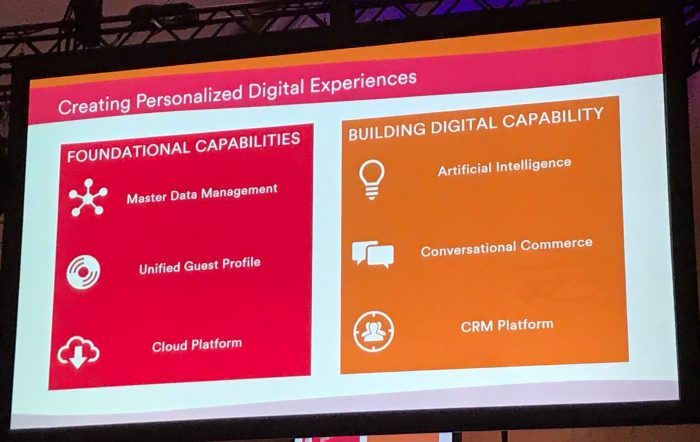
KFC In Australia Tests Fast-Food With Fewer Humans
Camperdown
Atlanta Journal Constitution: What You Need to Know About Forsyth’s Gathering and NHL Negotiations
Read more with Atlanta Journal Constitution here.
IRDC 2018 Recap
Did you miss this year’s International Retail Design Conference? You’re in luck … our team of FRCH-attendees are here to share highlights, takeaways, and recommendations from this year’s conference.
Presented annually by VMSD, the conference includes three days of design dialogue centered around best practices, evolving trends, and fresh strategies for engaging shoppers and maximizing resources. More than just presentations, the conference allows attendees to get up-close and personal with a new city each year that is leading the way in retail innovation – this year’s pick? Seattle.
Our team not only presented at the conference (click to view and download our presentation “Tapping Into the Senses to Strike an Emotional Chord”) but also heard a lot of food for thought including these
5 key takeaways for retailers:
- Don’t Forget the Fantasy. In this age of Amazon, it’s easy to forget the whimsy – but at the end of the day it’s shopping – it’s entertainment. Bring back the romance that retail once had, whether it’s in a store window or a fitting room, create adrenaline and emotion through design.
- Flexible Programming. Consumption of experience has outpaced consumption of goods by a factor of 3. With that in mind, successful environments are those that create communities among their guests. Create adaptable, functional design that will get your guests to say hello sooner.
- Connectivity Is King. The smartest person in the room is the one closest to the customer. Leverage your boots on the ground, instead of making all decisions in a corporate silo, to create true brand ambassadors. And don’t assume what customers know, want, or experience – instead ask them.
- Digital Literacy. No longer about online vs offline, today it’s simply about shopping. Retail brands need to focus on creating brand affinity versus brand engagement in order to create stronger brand advocates. Utilizing the 4 C’s: Connections, Content, Conversion, and Community to build loyal followers.
- Welcome to the Algorithmic Age. Soon everything will be curated for you (if it’s not already). A key consideration will be how retail brands can better anticipate their consumer’s intentions without them having to tell us.
Retail Tour
Few cities have been a testing ground for as many retailers that have expanded nationally or internationally than Seattle. Home to Nordstrom, Starbucks, REI, and Amazon to name a few. It made a perfect backdrop for this year’s IRDC and we made sure to get in our steps while taking in some highlights.
Check out our “must-see” Seattle tour, a curated list of some our favorite experiences in retail, restaurant, hospitality and more. From new brand concepts like Amazon Go, to independent boutiques like Glasswing, a clothing and home-goods shop that contains a shared design office and common gallery space available for rent (and has a great Seattle-focused blog). **Bonus Stop: if you find yourself farther south in Columbia City, also make sure to check out Eileen Fisher Renew (recently highlighted on Creative Fuel).
Below are a few of our favorite hot spots along the way … take a look and enjoy!
Amazon Go
Now with 3 Seattle locations (and 2 in Chicago with another one on the way), the online giant is showing it can be effective in brick-and-mortar as well. Our team visited the store on 7th avenue, and other than having to download the app prior to entering the store, we were impressed by how seamless the experience was. The 1,800-square foot market carried a curated list of items that ranged from grocery staples to more gourmet offerings that you might find at a Trader Joe’s. One offering we found particularly convenient was their Amazon Meal Kits – 4 pre-selected meals for two people that could be ready in 30 minutes. With the rise of subscription based meal-kits, its a timely solution that allows consumers the same ease, without the subscription commitment.
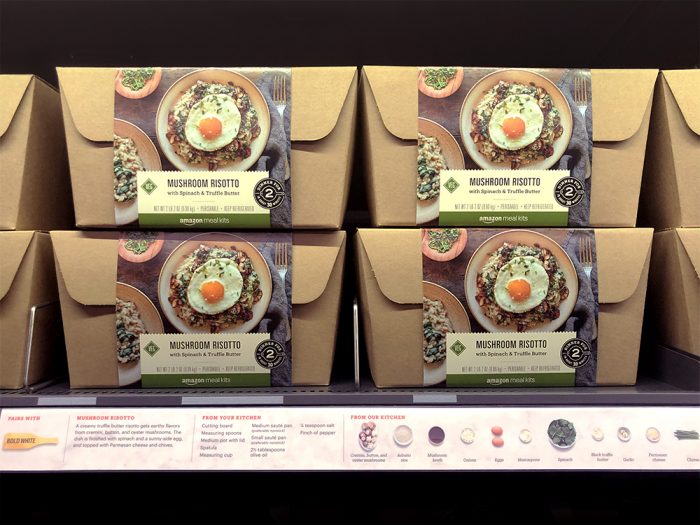
Totokaelo
Described as the “purveyor of beautifully designed and thoughtfully curated fashion and objects” Totokaelo, located in Seattle’s hip Capitol Hill neighborhood, is 7,000 sf of curated, high-end collections. The bi-level store features a gleaming white interior complete with skylight and plenty of natural light, making for a bright and inviting entrance.
The overall space is simple in form but but big on impact, allowing the fashion to become the art object in this gallery-like environment. The stark white interior is balanced by wood and other natural materials – leather, macrame and woven rugs are used to warm the space but not take away from the product. Understated details like curved display walls, artistic pendant lights, and exposed beams elevate the store in a very sophisticated manner.
This luxury offering is a nice contrast to the more casual, grunge vibe of the surrounding neighborhood. While the store offers luxury labels like Dries Van Noten and Comme des Garçons, the collection is also very in-tune with the Seattle style and environment, offering lots of functional, utilitarian styles for both men and women.
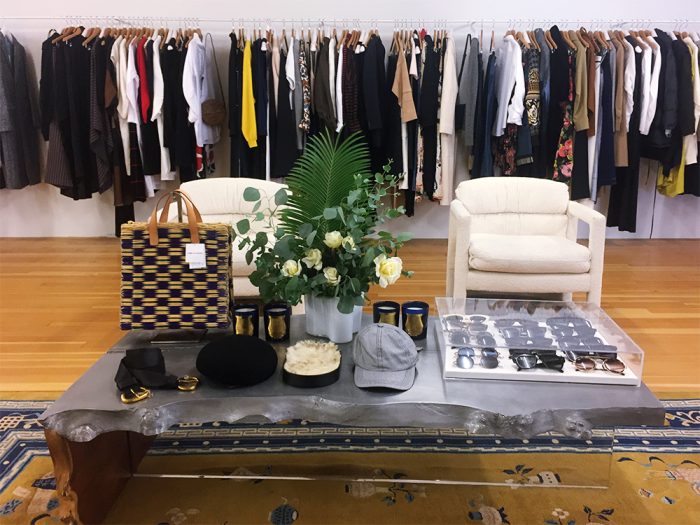
Princi
This summer Starbucks opened it’s first standalone Princi bakery at 2118 Westlake Avenue. The high-end Italian bakery concept features fresh pastries, bread, and focaccia pizza, among other treats – in addition to Starbucks coffee and a bar area severing cocktails, beer, and wine. Starbucks recruited Milanese baker Rocco Princi’s namesake company in 2016 for its high-end Starbucks Reserve Roasteries (see below) and the brand is now making a push to open Princi bakeries across the country. Our team sampled the goods and were not disappointed. The environment was warm and inviting, including an outdoor fire pit and a clear view into the kitchen to see the bakers at work.
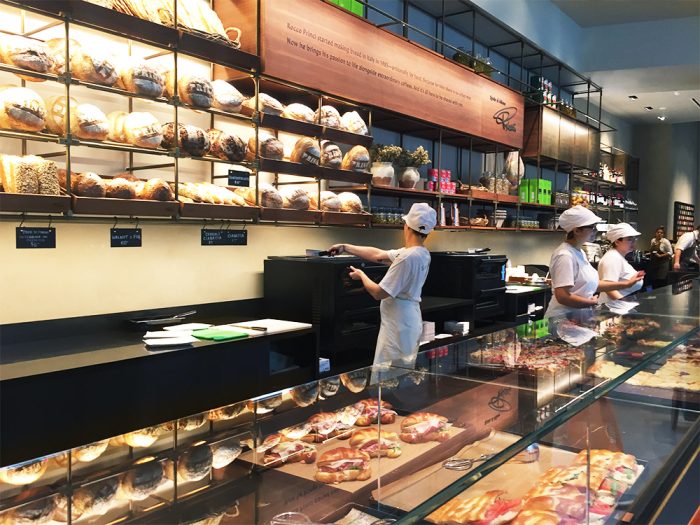
Sitka and Spruce
Our team enjoyed a great dinner with great friends at Sitka and Spruce during the conference. Located in Capitol Hill’s Melrose Market, the quirky charm of this restaurant is undeniable. The space is framed by old, oversized auto shop windows with a brick, wood-burning oven in plain sight anchoring the open kitchen. Lucky enough to reserve the coveted communal table, nothing sat between us and the butcher block table of the kitchen. The rustic environment and farmhouse dining room created an intimate space to enjoy shareable bites of authentic Pacific Northwest cuisine.
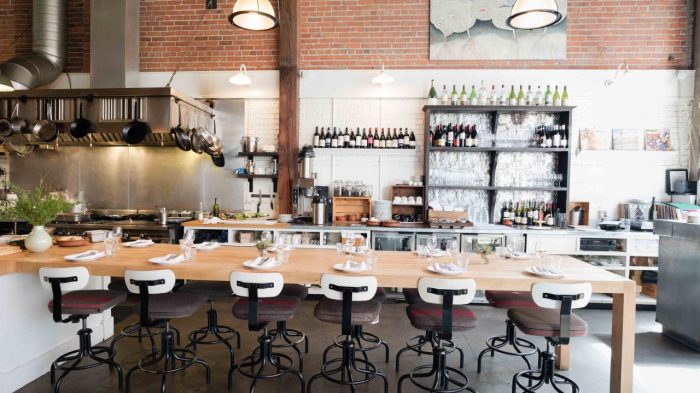
Starbucks Reserve Roastery
No trip to Seattle is complete without stopping at the Starbucks Reserve. This dramatic expression of the coffee giant was launched in 2014 and celebrates the true craft experience, from unroasted beans to the coffee steaming in your cup. Located just nine blocks from the original Starbucks Pike Place store, the experience is not only for coffee-drinkers, but instead boasts a full bakery, deli, and bar – in addition to accessories and Starbucks products.
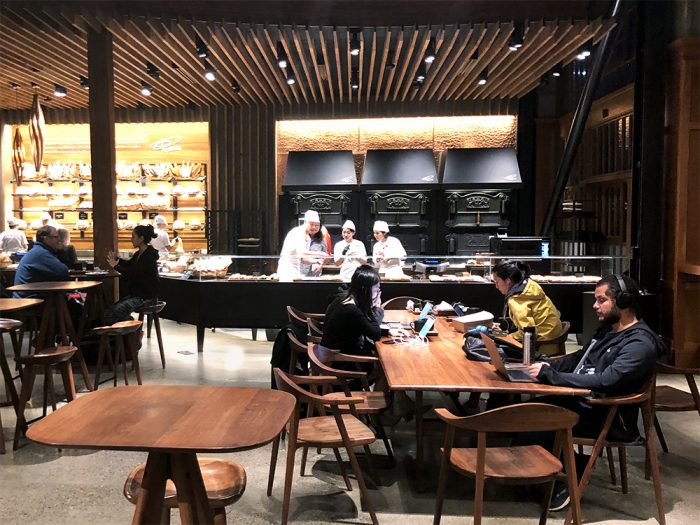
Tuft & Needle
Mattress e-tailer turned brick-and-mortar brand, Tuft & Needle recently opened one of their four physical stores in downtown Seattle. The Amazon darling already gets 25% of sales through the online giant, but knew in order to disrupt the mattress industry, they would need to expand their footprint. The founders created a “Hate List” (the original posted in-stores) of things that wanted to change about the traditional mattress-buying experience and it has been a driving motivator in their guiding mission to “change the mattress industry by taking care of people.”
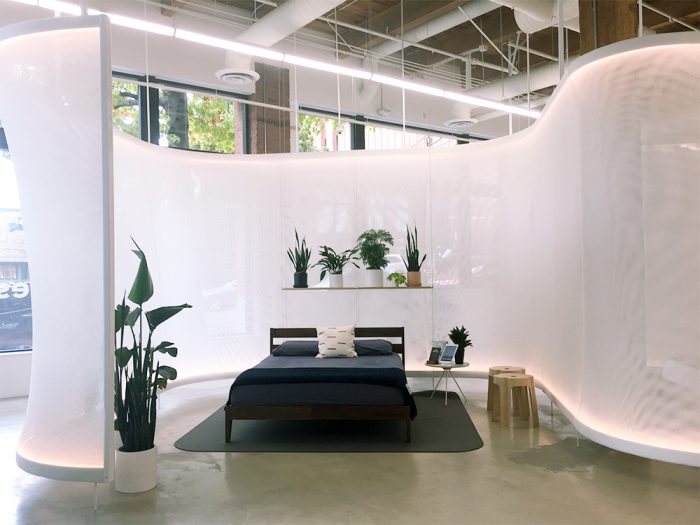
The Phluid Project
The latest Retail Design Institute event in New York was hosted at The Phluid Project in SoHo, a new retail space that claims to be the first gender free apparel store in the world.
The overall space had a cheerful ambiance, with pops of color and fun visuals. The store design is very minimal with high ceilings, white walls and big windows, allowing the merchandise to be the star of the show. Hanging on the wall like art pieces, are The Phluid Project t-shirts, while the rest of the fixtures are white cubes, racks and tables.
The space is not all about the merchandise though, guests are encouraged to stay and relax with a back bar serving coffee and kombucha, a hidden “selfie” nook, and colorful bleachers, allowing plenty of space for guests to hang out and recharge. The store also has an office space in the lower level that can be rented free of charge for events and gatherings.
At the RDI event, founder Rob Smith talked about his inspiration and the desire behind the project – to create a space and atmosphere where everybody can feel free to be who they are. His vision was to create a space where everybody can feel comfortable shopping – remembering the days when boys would feel embarrassed having to walk in the women’s section to try a pair of jeans, in order to fit their style. For him, it was less about the clothes and more about creating a different retail experience for people that don’t fit in a typical gender description, or consider themselves gender fluid. He admitted he was surprised by the amount of tourists that stop by, from all over the world, to check out the space – realizing most people are just curious to see how a store with no gender division works.
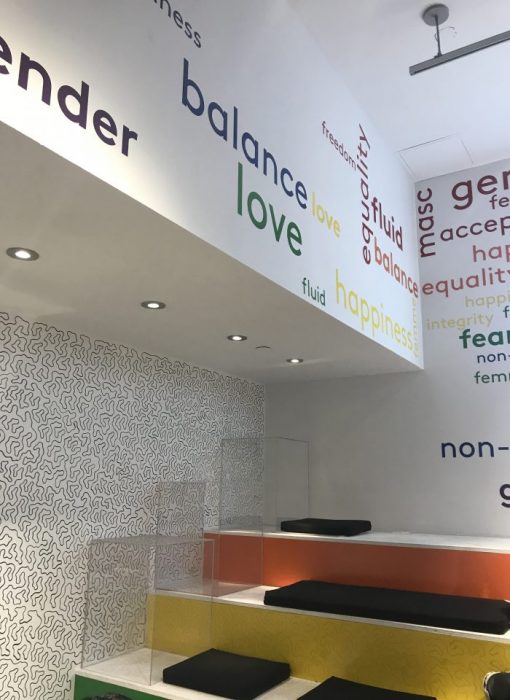
The merchandising itself is organized by style, I recognized a few familiar brands such as Fila and Champion, representing their more casual, summer offerings. While I didn’t spot many dresses and skirts, there were plenty of loose shirts, crop tops, jeans jackets and tons of sneakers. In addition, the store also sells beauty products, sunglasses, accessories and books. The merchandise and brands change every few months, as does the store layout, so all the fixtures are on casters to make it easy to move in order to create different configurations. The mannequins have been designed to have a less masculine body than the typical male ones, Smith wanted to combine men and women’s body types into one.
Altogether it was a wonderful event, in a great environment. It’s exciting to see a store that opens up a new future for kids that don’t identify themselves with a traditional gender and will finally have a place where they can shop freely without having to choose.
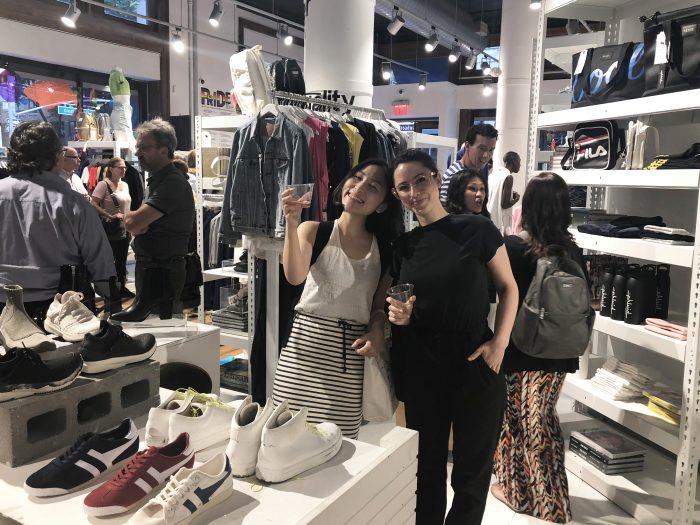
WELLness While Working from Home
Inspired by WELL Building Standards, we’re bringing our workplace design expertise back home to you. We are sharing 10 tips to create better work environments at home that prioritize your health, well-being, and happiness.
Tip #1: Keep water where you are. If you have multiple re-usable water bottles, put them in the areas you are spending most of your time. Mimic WELL Building Standards by increasing the number of locations you have access to water. If it’s where you are, you’ll drink more of it.
Tip #2: Put “move” time on your calendar. Make sure to actually block out time on your calendar so you’ll receive the reminder to get up and start moving. Do you need some free inspiration? Check out this round-up of free online classes.
Tip #3: Go on a walk. In many areas, you can take a walk around your neighborhood while still practicing social distancing. A great way to get off the beaten path is to find nearby local hikes on AllTrails.
Tip #4: To reduce the number of grocery trips you are making, check out the longest-lasting fresh produce to stock up on, and get the most bang for your buck.
Tip #5: Make sure you’re sitting or standing correctly while working. Check out these reminders to make sure you have the ideal body posture throughout the day.
Tip #6: As the temperature starts to warm up, open the windows if you’re able. Not only will it increase your outdoor air intake, but the sounds of outside can lower stress, cortisol levels, and blood pressure.
Tip #7: Use the 5-4-3-2-1 Method. If your brain is stuck on the “worry” setting, try this method of emotional grounding. Find:
- 5 things you can see
- 4 things you can touch
- 3 things you can hear
- 2 things you can smell
- 1 thing you can taste
Tip #8: Try video conferencing. While a lot of us aren’t comfortable on camera, it helps us feel connected and less isolated when we are able to see and visually interact with our coworkers, friends, and family.
Tip #9: Focus on starting and completing tasks. A sense of purpose and progress can help when things feel out of control. Try downloading a free to-do list app like Any.do, Todoist, or Google Keep.
Tip #10: Know when to log off. Shut down and stop working when you would normally leave the office. Although that can be challenging in our always connected world, you’ll need a good work-life balance even more since your work is now home with you all day.
Privacy Policy
Park Avenue Seasonality
A few weeks ago, I was staring out the window of a NYC Taxi trying not to wince as we almost got flattened by a truck, and a bright yellow awning emblazoned with the word “summer” in bold, capitalized letters grabbed my attention. I caught a glimpse through the window as we whizzed by and had a vague impression of an interior dripping with vibrant plants, but before I could get a really good look we were off again.
My curiosity was piqued and as soon as I was back on solid ground I was furiously searching the internet for more information. Imagine my surprise when I discovered the location was a truly seasonal concept from Michael Stillman, formerly of Smith & Wollensky, and the concept was a revival and reimagining of the Park Avenue Café which had enjoyed a 22-year run on the Upper East Side.
The concept is completely seasonal, changing everything from the menu, décor, and details down to the business cards for each of the four seasons – Spring, Summer, Autumn, Winter. The Summer menu is stuffed with light, sweet options like Strawberry Gazpacho and a Maine Lobster dish with pickled peppers, while the décor gives off a warm, comforting glow reminiscent of the sky at sunset.

The Autumn season, on the other hand, gives off classic crunchy leaves and hearty, spirit warming meals – like their famous Broccoli and Cheetos Soup (yes, you read that right, Cheetos) and Sticky Toffee Pudding.
It’s a concept that gives new meaning to the idea of “seasonality.” Clearly, the team behind the restaurant knows what they’re doing as visitors are drawn to revisit the location every few months to see what the new season has brought for them. They also do an excellent job of building up excitement for the new season through their social media channels. Once the time comes for the transition, they close for three days, black out all of the windows, and then reopen with the completed transformation – ready for guests to immerse themselves in the fresh season.
The idea of seasonality behind this restaurant isn’t necessarily new to Millennials, they’ve gotten used to constantly changing inventory and curated collections from brands like Zara and pop-up experiences across the retail industry. Even in the restaurant industry, we’ve been slowly conditioned to expect a certain amount of exclusiveness. Consider, for example, the rise of popularity in food trucks and promotional pop-ups during the holiday season. But, the idea of a permanent location that changes not only the food, but also its entire brand presence and recognizable elements is new for the category.
There are potentially some broader implications for the entire retail industry as we see consumers continuing to look for new and differentiating experiences. In the future, we could conceivably see the in-store design change right next to the clothes they’re selling. Can you imagine walking into Target one morning and seeing everything from the wall color to the carpet tiles and the clothing racks suddenly immersing you completely in the feeling of the season?
Image Credits: The Village Voice, Gothamist, and Park Avenue